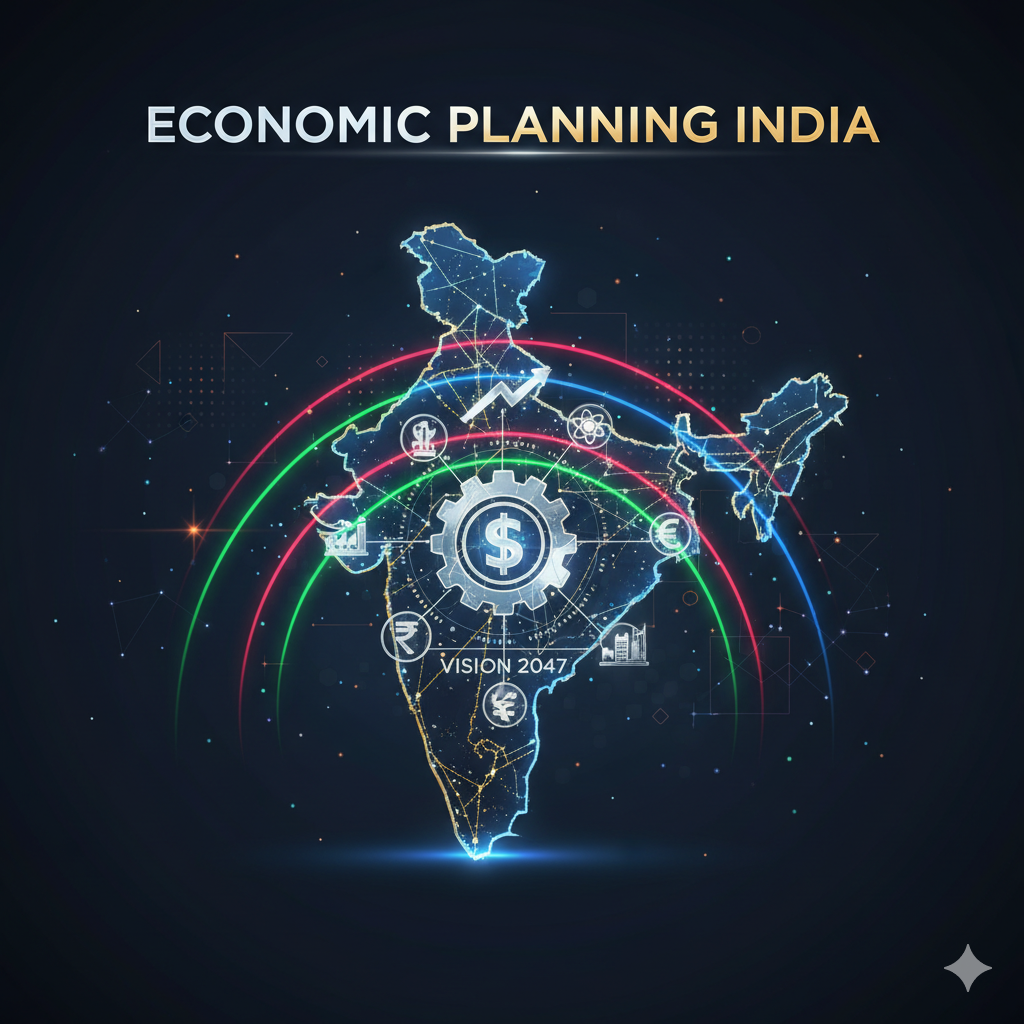Introduction
India’s agriculture and rural economy heavily depend on water availability and watershed management, especially in rainfed regions, which constitute nearly 60% of cultivated land. Inadequate water management leads to soil erosion, low productivity, and rural distress. To address these challenges, the Government of India launched the Neeranchal Watershed Management Programme (NWMP) in 2018 as part of the Pradhan Mantri Krishi Sinchai Yojana (PMKSY) framework.
The programme is designed to enhance watershed development activities, improve soil and water conservation, promote sustainable agriculture, and boost rural livelihoods. NWMP represents a holistic and technology-driven approach to watershed management, ensuring that both environmental sustainability and socio-economic benefits are achieved.
Background and History
- Watershed Challenges in India
- A significant portion of Indian agriculture is rainfed and dependent on monsoon, making it vulnerable to droughts, floods, and climate variability.
- Poor water management and land degradation have led to declining productivity, crop failure, and loss of rural livelihoods.
- A significant portion of Indian agriculture is rainfed and dependent on monsoon, making it vulnerable to droughts, floods, and climate variability.
- Evolution of Watershed Programmes
- India has implemented several watershed initiatives since the 1980s, including:
- Integrated Wasteland Development Programme (IWDP)
- Watershed Development Fund under National Bank for Agriculture and Rural Development (NABARD)
- Accelerated Watershed Development Programme for Rainfed Areas (AWDPR)
- While these programmes had some success, they were often fragmented, less technology-driven, and lacked robust monitoring mechanisms.
- India has implemented several watershed initiatives since the 1980s, including:
- Launch of Neeranchal Watershed Management Programme
- NWMP was launched in 2018 under PMKSY-Har Khet Ko Pani, with technical and financial support from the World Bank.
- It aims to strengthen and consolidate ongoing watershed development efforts, improve planning, implementation, monitoring, and capacity building, and ensure sustainable use of land and water resources.
- NWMP was launched in 2018 under PMKSY-Har Khet Ko Pani, with technical and financial support from the World Bank.
Objectives of NWMP
The programme is designed with multiple objectives to ensure holistic watershed development:
- Strengthening Institutional Capacity
- Build capacity of State Departments, Watershed Development Agencies (WDAs), and local bodies for effective planning and execution.
- Build capacity of State Departments, Watershed Development Agencies (WDAs), and local bodies for effective planning and execution.
- Improved Planning and Implementation
- Promote scientific watershed planning, including land and water resource assessment, prioritization of interventions, and technology adoption.
- Promote scientific watershed planning, including land and water resource assessment, prioritization of interventions, and technology adoption.
- Sustainable Agricultural and Allied Development
- Enhance farm productivity, soil conservation, and water use efficiency.
- Promote diversification into horticulture, livestock, and agroforestry.
- Community Participation and Empowerment
- Strengthen participatory watershed management, involving Gram Panchayats, farmer groups, and local communities.
- Strengthen participatory watershed management, involving Gram Panchayats, farmer groups, and local communities.
- Monitoring, Evaluation, and Knowledge Management
- Establish robust MIS, geospatial mapping, and performance evaluation mechanisms.
- Develop knowledge repositories and best practice dissemination platforms.
- Livelihood and Socio-Economic Enhancement
- Improve income, employment, and resilience of rural communities.
Key Features of NWMP
- Centrally Sponsored Programme
- NWMP is a centrally sponsored scheme implemented by states with technical support from the Ministry of Agriculture & Farmers Welfare and NABARD.
- NWMP is a centrally sponsored scheme implemented by states with technical support from the Ministry of Agriculture & Farmers Welfare and NABARD.
- Technology-Driven Watershed Development
- Uses GIS, remote sensing, and spatial planning tools for watershed demarcation and intervention prioritization.
- Uses GIS, remote sensing, and spatial planning tools for watershed demarcation and intervention prioritization.
- Capacity Building and Training
- Focuses on training state officials, project staff, and community members for sustainable watershed management.
- Focuses on training state officials, project staff, and community members for sustainable watershed management.
- Integration with PMKSY
- NWMP is integrated with Pradhan Mantri Krishi Sinchai Yojana, ensuring efficient water use, irrigation coverage, and agricultural productivity.
- NWMP is integrated with Pradhan Mantri Krishi Sinchai Yojana, ensuring efficient water use, irrigation coverage, and agricultural productivity.
- Results-Based Financing and Monitoring
- Incentivizes performance-based project implementation.
- Encourages e-Governance tools for monitoring and reporting.
- Participatory Approach
- Encourages farmer participation, community-led planning, and decentralized governance.
Components of NWMP
The Neeranchal Watershed Management Programme focuses on the entire watershed cycle, covering planning, execution, and post-implementation support.
1. Capacity Building and Institutional Strengthening
- Training of state and district officials, WDAs, NGOs, and farmer groups.
- Developing technical manuals, guidelines, and knowledge management platforms.
- Strengthening State Level Project Management Units (SLPMU) and District Level Project Management Units (DLPMU).
2. Watershed Planning and Technology Use
- Geospatial mapping to identify degraded lands, water bodies, and soil types.
- Prioritization of critical interventions based on soil and water potential.
- Use of Hydrological, Agro-meteorological, and Land Resource Information Systems.
3. Implementation of Physical Interventions
- Soil and water conservation measures, such as contour bunding, gully plugging, and check dams.
- Promotion of water harvesting structures, farm ponds, and irrigation channels.
- Soil fertility management: composting, green manuring, and integrated nutrient management.
4. Livelihood and Income-Enhancing Activities
- Promotion of horticulture, medicinal plants, agroforestry, and floriculture.
- Support for livestock, poultry, goatery, and fisheries.
- Encouragement of micro-enterprises and small-scale agro-processing units.
5. Monitoring, Evaluation, and Knowledge Management
- Use of real-time monitoring through dashboards and MIS platforms.
- Geotagging and remote sensing for progress tracking.
- Documentation of best practices and lessons learned for replication.
6. Community Mobilization
- Formation of watershed committees, self-help groups, and user groups.
- Ensuring participatory decision-making, ownership, and maintenance of assets.
Implementation Mechanism
- Central-State Collaboration
- The Central Government provides financial and technical assistance, while states implement projects through WDAs and local bodies.
- The Central Government provides financial and technical assistance, while states implement projects through WDAs and local bodies.
- Funding Pattern
- Funding is shared between Centre and State:
- General States: 60% central, 40% state
- North-Eastern and Himalayan States: 90% central, 10% state
- Funding is shared between Centre and State:
- Project Planning and Approval
- States prepare Integrated Watershed Development Plans (IWDPs) for selected micro-watersheds.
- Plans are approved by State Level Empowered Committees and PMKSY authorities.
- States prepare Integrated Watershed Development Plans (IWDPs) for selected micro-watersheds.
- Monitoring and Evaluation
- Real-time monitoring through MIS and geotagged photographs.
- Third-party evaluations assess impact on productivity, water availability, and livelihoods.
Achievements and Impact
- Enhanced Water Use Efficiency
- Creation of check dams, farm ponds, and irrigation channels improved water availability in rainfed areas.
- Creation of check dams, farm ponds, and irrigation channels improved water availability in rainfed areas.
- Soil and Land Conservation
- Reduced soil erosion and land degradation through contour bunding, gully plugging, and afforestation.
- Reduced soil erosion and land degradation through contour bunding, gully plugging, and afforestation.
- Increased Agricultural Productivity
- Higher yields due to soil fertility improvement, water availability, and crop diversification.
- Higher yields due to soil fertility improvement, water availability, and crop diversification.
- Livelihood Enhancement
- Promotion of horticulture, livestock, fisheries, and agroforestry increased income and employment opportunities.
- Promotion of horticulture, livestock, fisheries, and agroforestry increased income and employment opportunities.
- Community Participation
- Formation of watershed committees and self-help groups strengthened ownership and sustainability.
- Formation of watershed committees and self-help groups strengthened ownership and sustainability.
- Technology Adoption
- GIS-based planning, remote sensing, and MIS improved efficiency, monitoring, and transparency.
Challenges in Implementation
- Limited Awareness and Capacity
- Many rural communities and officials lack technical knowledge for effective watershed management.
- Many rural communities and officials lack technical knowledge for effective watershed management.
- Funding and Resource Constraints
- High costs of infrastructure development and technology adoption may limit coverage.
- High costs of infrastructure development and technology adoption may limit coverage.
- Climate Variability
- Erratic rainfall, floods, and droughts affect watershed effectiveness.
- Erratic rainfall, floods, and droughts affect watershed effectiveness.
- Maintenance and Sustainability
- Ensuring long-term maintenance of physical structures and community participation is challenging.
- Ensuring long-term maintenance of physical structures and community participation is challenging.
- Coordination Issues
- Multi-agency involvement requires strong coordination among state departments, NGOs, and local bodies.
Future Prospects
- Scaling Up Watershed Interventions
- Expand NWMP to cover more rainfed and degraded regions.
- Expand NWMP to cover more rainfed and degraded regions.
- Digital and Precision Watershed Management
- Integration of IoT sensors, GIS mapping, and AI-driven models for real-time monitoring and decision-making.
- Integration of IoT sensors, GIS mapping, and AI-driven models for real-time monitoring and decision-making.
- Enhanced Livelihood Opportunities
- Promote agro-processing, value addition, and micro-enterprises for sustainable income generation.
- Promote agro-processing, value addition, and micro-enterprises for sustainable income generation.
- Climate Resilience
- Focus on drought-tolerant crops, water-efficient farming, and adaptive strategies to counter climate variability.
- Focus on drought-tolerant crops, water-efficient farming, and adaptive strategies to counter climate variability.
- Community Empowerment and Governance
- Strengthen participatory watershed committees, farmer groups, and local governance mechanisms.
- Strengthen participatory watershed committees, farmer groups, and local governance mechanisms.
- Knowledge Sharing and Capacity Building
- Disseminate best practices, case studies, and success stories across states for replication.
Conclusion
The Neeranchal Watershed Management Programme (NWMP) represents a comprehensive and technology-driven approach to address India’s critical water and land management challenges. By integrating soil and water conservation, livelihood enhancement, community participation, and modern technology, NWMP contributes to sustainable agriculture, increased productivity, and rural resilience.
Despite challenges like climate variability, funding constraints, and maintenance issues, the programme’s focus on scientific planning, capacity building, and participatory governance ensures that it can significantly improve water security, agricultural productivity, and rural livelihoods in India.
NWMP is not only a watershed development initiative but also a platform for inclusive, sustainable, and climate-resilient rural development, making it a cornerstone of India’s agricultural and environmental policy framework.




